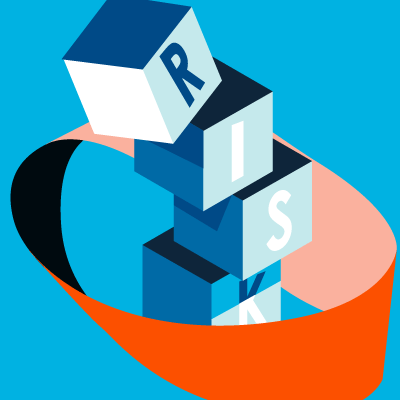Emerging liability risks come in many shapes and sizes—marijuana, climate change, football concussions, and more. Each risk brings unique concerns to (re)insurers, and individuals in different roles from actuaries to risk managers may be concerned about these risks.
Liability catastrophe modelers have a very particular focus: to identify accumulations and to quantify their potential to generate catastrophic losses to (re)insurer portfolios. This means, of course, that liability modelers will have a very specific focus when it comes to emerging liability risks. While other considerations from emerging risks are important, such as rising claims costs or coverage impacts, it is the potential for significant accumulations that primarily drives modeling interest in some liability risks. This blog provides a liability catastrophe modeling definition for emerging risks that Arium uses to identify and prioritize those risks we think may have potential accumulations for (re)insurers.
We define an emerging liability risk as “an event of sizable magnitude and probable likelihood that could trigger more than one liability insurance policy.” Let’s unpack the two parts of this definition: (1) what makes a risk suitable for modeling in a scenario-based tool such as Arium; and (2) what makes a risk worth modeling.
Risks Suitable for Scenario-Based Modeling
In Arium’s scenario-based model, a potential emerging risk must satisfy three necessary conditions:
- An event: On a very basic level, there must be an event—something (actual or contemplated) needs to occur.
- Liability insurance triggered: An event is necessary because the risk should trigger liability insurance (including defense costs). There are two aspects to this. One is that there should be someone who owes duties or obligations to someone else. The event should then create the circumstances in which a breach of these duties or obligations occurs in some way. In other words: liability. The other aspect is that this liability should specifically affect liability insurance coverages. In general, we are not interested in criminal liability or constitutional concerns, except in those cases where criminal activity can create insurable liability, such as if venues are liable for preventing criminal activity on their premises.
- Multiple liability insurance policies: This refers to the “systemicity” of a risk and its potential to generate significant accumulations. Liability catastrophes do not include the uncorrelated attritional risks that (re)insurers routinely handle. Rather, catastrophes are triggered by a common underlying cause that can affect multiple companies, industries, claims and occurrence years, and lines of business. That is, they can impact many liability policies.
For example, a person breaks their leg due to a slip-and-fall on a wet floor in a grocery store. This scenario satisfies all conditions but one: this is not a systemic event. Now imagine that hundreds of grocery stores install a new type of laminated flooring. Suddenly there is a large increase in slips-and-falls due to the new flooring providing less traction. Multiple companies could be implicated—the stores themselves, the flooring manufacturer, manufacturers of component parts of the flooring, wholesalers, distributors, and contractors. We now have a systemic event arising out of a new product. A single slip-and-fall isn’t a liability catastrophe. But hundreds of slips-and-falls because of a defective product could be a liability catastrophe.
Risks Worth Modeling
Not every emerging risk that is suitable for modeling is worth modeling. The risk should also be of sizable magnitude and probable likelihood.
Magnitude: The risk should have the potential to generate large losses. In some cases, this is a function of how systemic an event might be—how significant the accumulations are. For liability catastrophes, large losses typically mean at least USD 1 billion in estimated ground-up losses in the near term.
Concerns about the chemicals in sunscreen products, for example, reportedly go back decades. The link between sunscreen and bodily harm remains very tenuous, however, potentially dampening widespread litigation related to this risk. We therefore monitor developments related to sunscreen risks, but do not anticipate large losses in the near term and will forego modeling this risk in the immediate future.
Likelihood: Emerging liability risks are difficult to quantify in part because of the uncertainty around how they may develop. The further into the future we look, the more uncertain this quantification becomes—and the less certain if and how it will impact (re)insurer portfolios. If a particular emerging risk is still largely theoretical or isn’t anticipated to manifest for several years, if not decades, we may consider the uncertainty to be too great to quantify.
For instance, there is great uncertainty around when autonomous vehicles will comprise a sizable portion of the vehicle fleet. Even optimistic forecasts have been revised as the many difficulties related to autonomous driving have taken longer to overcome than expected. As such, a liability catastrophe arising out of autonomous vehicles is not expected to occur in the next few years. Therefore, as with sunscreen chemicals, we monitor developments related to autonomous vehicles but may not model this risk in the immediate future.
Applying the Definition
Let’s now apply the full definition to two emerging risks: social inflation and algorithmic bias.
“Social inflation” is generally defined as the “rising costs of insurance claims” due to a variety of societal factors (see, for example, the International Risk Management Institute). Many insurance professionals regard it as an emerging insurance risk that is significantly impacting and could continue to impact loss experience.
In our scenario-based modeling methodology, however, social inflation does not appear suitable. For one, there doesn’t appear to be an “event” as we define it. Social inflation may be a trend that is happening, but there is no single occurrence or action that is social inflation. Nor does the existence of social inflation implicate one party for breaching its duties and obligations to another party—there is no “trigger” for liability insurance.
Although social inflation is not a liability event as defined, we are nonetheless investigating other ways to help the industry account for this very real and pressing phenomenon.
“Algorithmic bias” refers to when algorithms may inadvertently incorporate the biases of their human creators, as well as biases inherent in the historical data on which they are trained, thus perpetuating those biases on a large scale. Of particular concern is the use of these algorithms in recruitment practices, where biased algorithms may lead to discriminatory outcomes for job applicants.
According to our emerging risk definition, this scenario does appear suitable for modeling:
- There is an event: the discrimination against a job applicant.
- There is liability: the duty an organization owes to applicants to employ good faith practices not to discriminate.
- This risk could be systemic: there is evidence that recruitment algorithms are being used by many companies across many industries. This systemicity indicates that the potential loss could be significant.
- And the likelihood of this risk manifesting appears probable: These algorithms are already being used and concerns about their fairness have already garnered public attention.
Conclusion
Using our emerging risk definition, we can transparently and consistently assess when an emerging risk is suitable for modeling as a potential liability catastrophe. We can determine which risks should be monitored, but not immediately quantified—for example, if the risk of large losses in the near term is considered small. We can determine which emerging risks should be quantified immediately because they’re already generating liability losses, such as the opioids crisis, or are anticipated to generate losses in the near term, such as certain types of climate change liability.
And once we have determined that a risk can and should be modeled, Arium develops an emerging risk scenario. Arium emerging risk scenarios incorporate distributions of potential ground-up losses under a range of possible outcomes to provide a holistic view of how the emerging risk may develop into a liability catastrophe. You can learn more about Arium emerging risk scenarios here.




